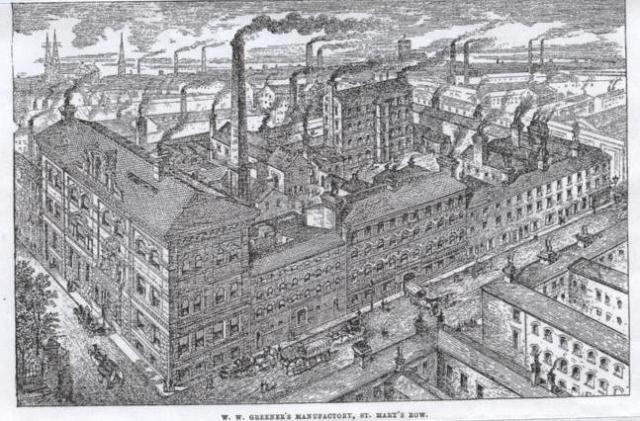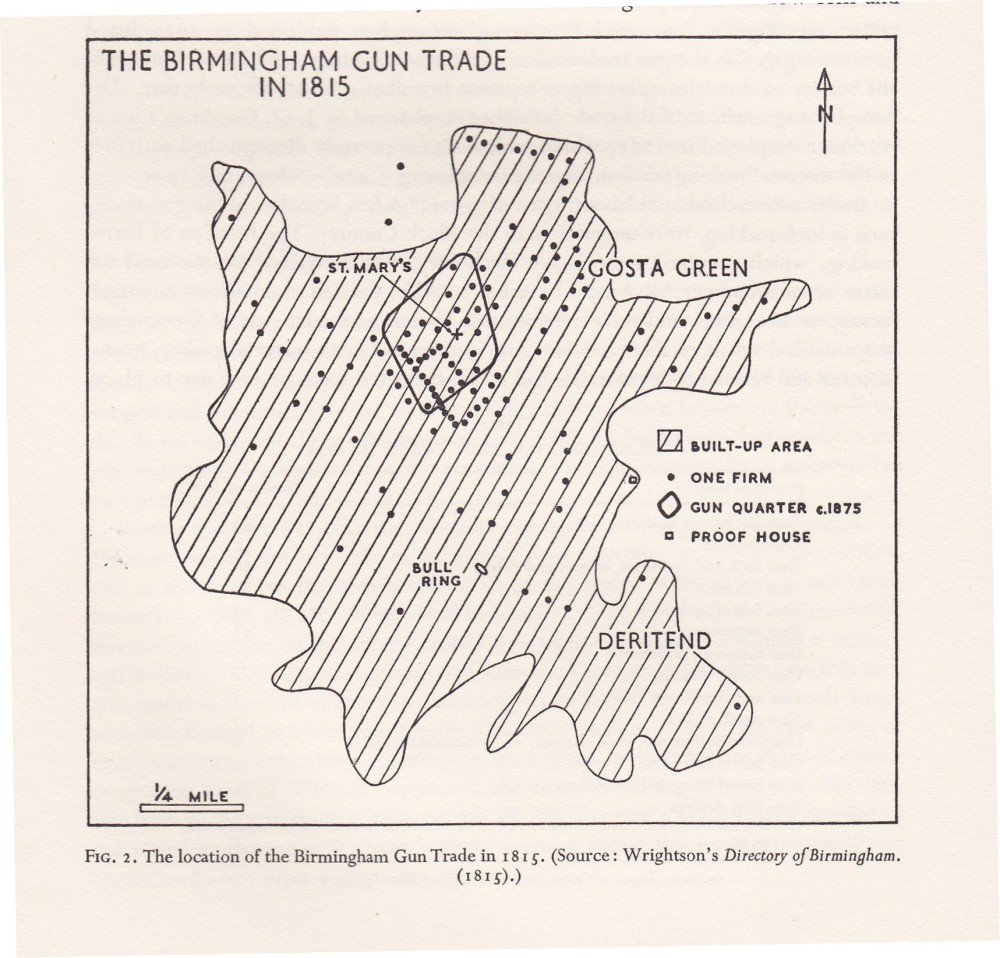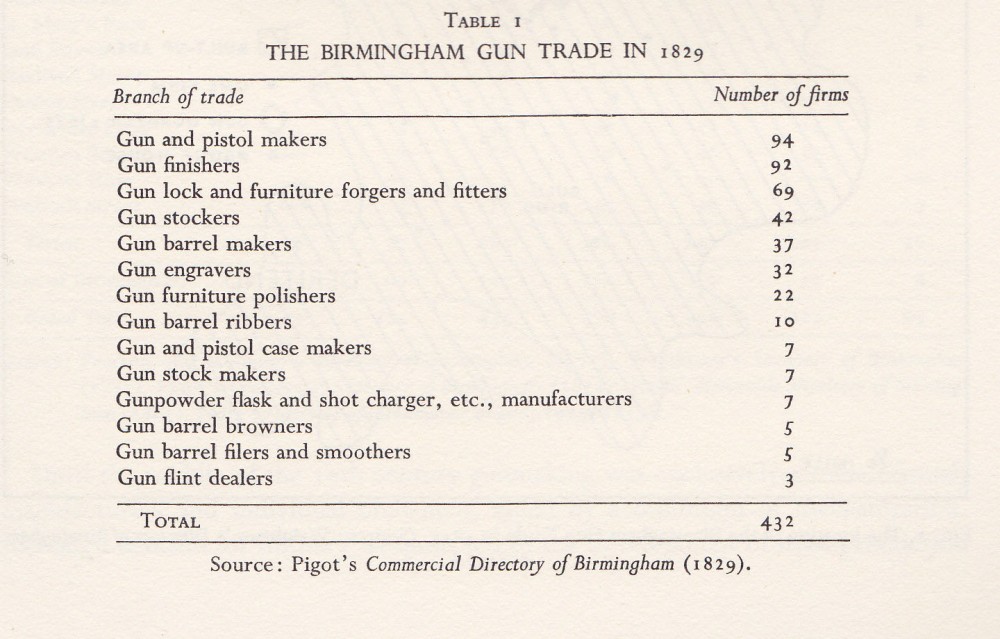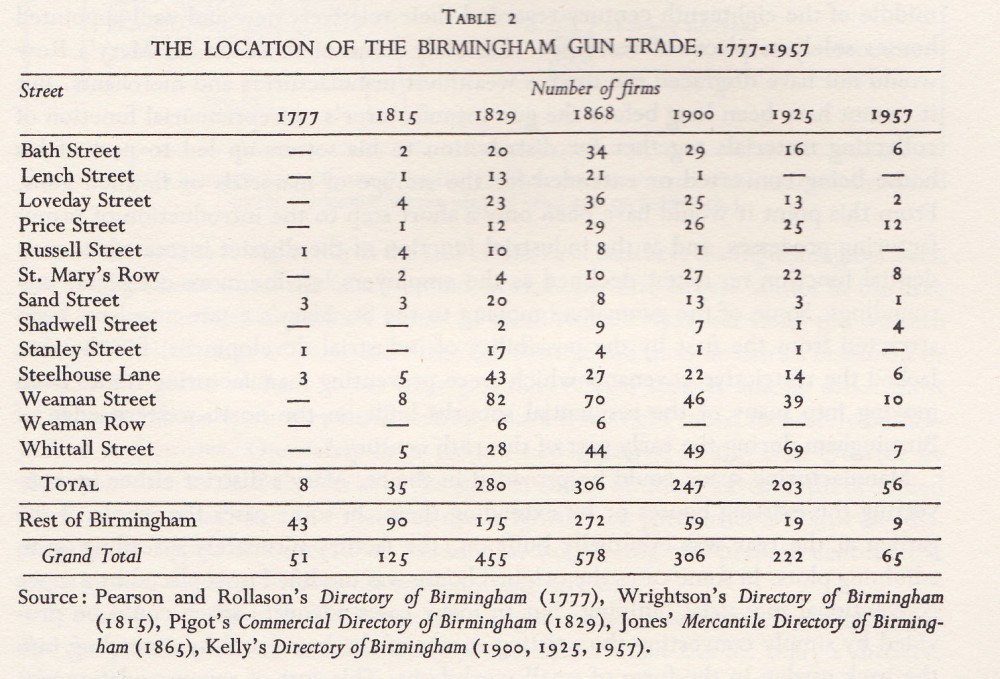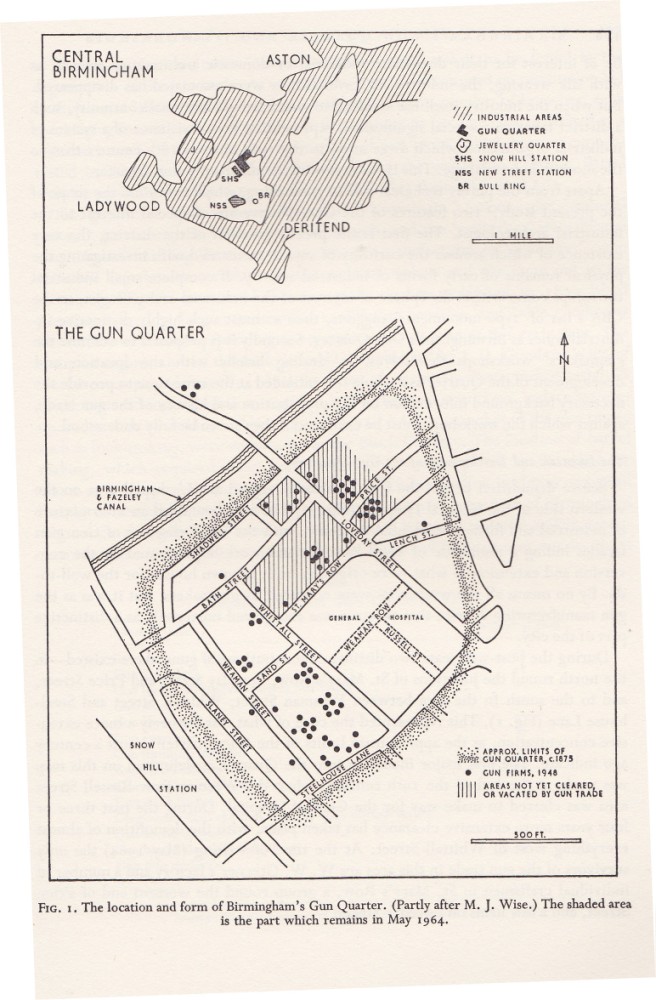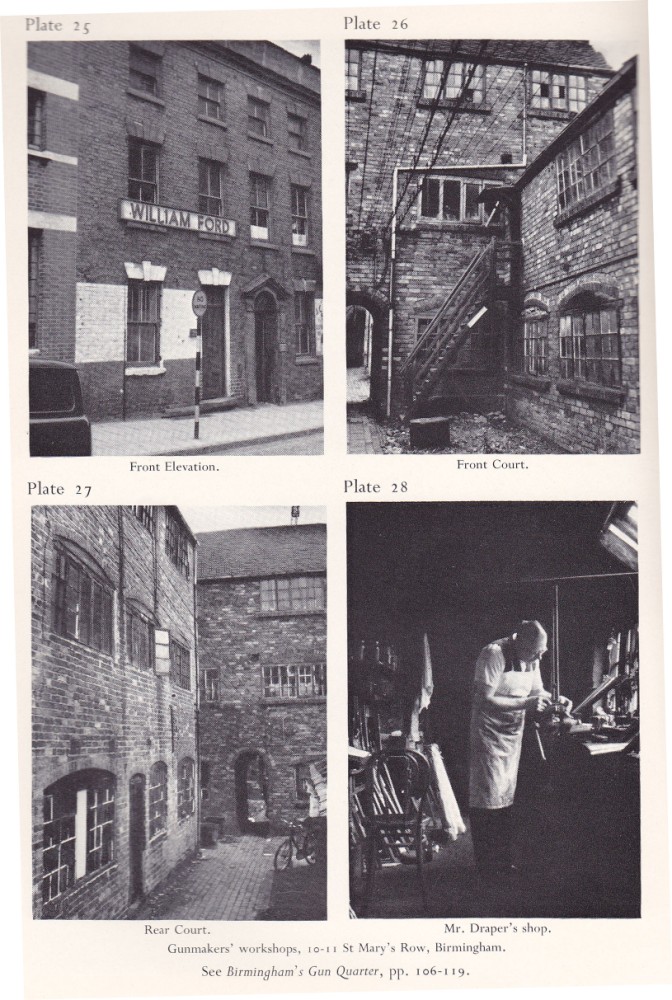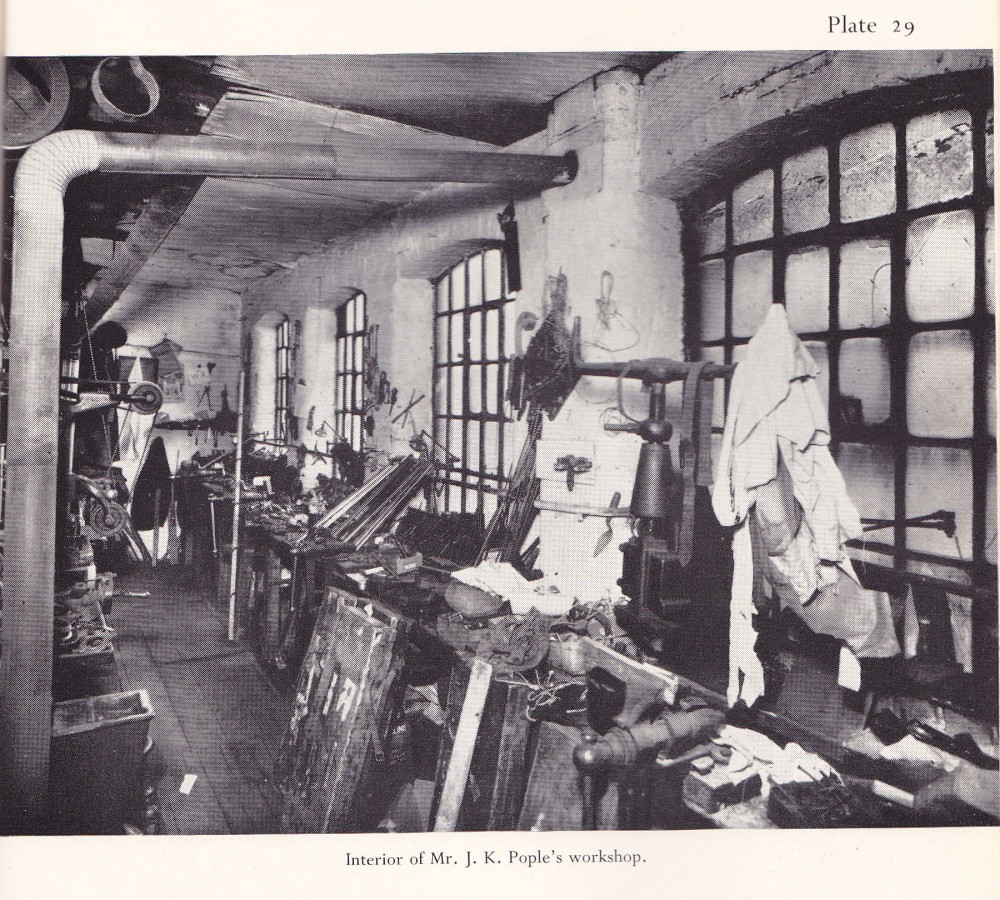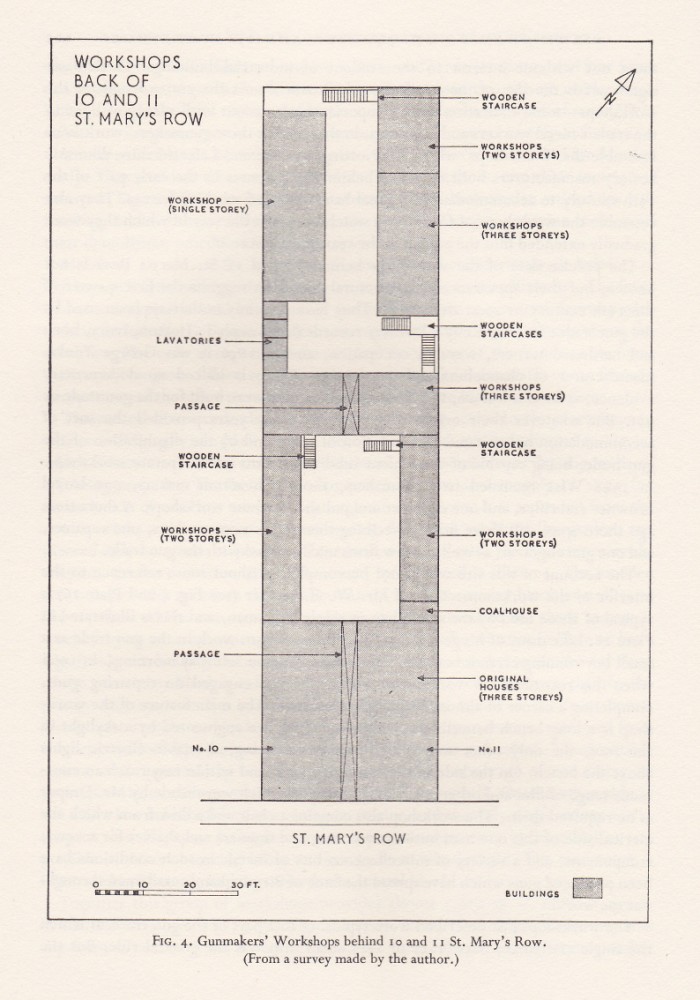Re: gun trade fatories
Here are a few posts I did several months ago. Hope they are useful to newer members of the Forum.
Birmingham Gun Quarter
I've got a copy of an article written by Dr D M Smith from the University of Manchester sometime around 1964. It makes fascinating reading (perhaps some of you have already read it.)
To paraphrase Dr D M Smith:
The Gun Quarter occupied an “L” shaped area on the western side of the General Hospital. The area contained an mixture of industrial and residential property, with the Georgian facades hiding a multitude of small factories and workshops created by the conversion and extension of what were originally built as town houses for the well-to-do. (see the illustrations earlier)
By no means all the workshops were occupied by gun makers, but it was as the gun manufacturing district that the area was recognised universally as a distinctive part of the city.
Two distinct concentrations of gun makers existed after the end of WW2, in the north around St Mary’s Row, Loveday Street and Price Street and to the south between Weaman Street, Whittall Strett and Steelhouse Lane.
“The concentration mentioned earlier represents the core of what was formerly a more extensive concentration, as the approximate limits of the Gun Quarter almost a century earlier indicate.” (See map on my first post)
“The first major incursion into the L-shaped area was made at the end of the 19[SUP]th[/SUP] century when the Weaman Row-Russell Street area was cleared to make way for the General Hospital.
The reason for this concentration in such a small area is to be found in the organisation of the Gun Trade. At an early stage the need to speed up production led to division of labour and the trade soon separated into a number of branches, each specialising in one process. Perhaps the first activity to become clearly defined as a separate branch of the trade was the making of gun locks, which became concentrated in Wolverhampton and Willenhall during the 18[SUP]th[/SUP] century. Barrel welding probably developed as a separate trade during the same period.
The Gun Trade thus became divided into two main sections – the “material makers”, producing the various parts of the guns and the “setters-up” who did the assembly and finishing. Between these came the manufacturer, or “gun maker”, who collected together the products of the material makers and then put them out to the setters-up.
Pigot’s Commercial Directory of Birmingham published in 1829 listed persons engaged in the gun trade under 14 different headings.” (Table 1 on my first post indicates the variety of activities operating as separate branches even at this early date.) “The complex organisation of the trade is further emphasized by J. D. Goodman’s list of workmen employed in 1865, which includes 32 separately distinguished activities in the material making section, together employing 3,420 workers and 19 setting-up trades with a combined labour force of 3,920.
A few branches of the gun trade, such as lock-making were undertaken in the Black Country. The location of barrel-making, which required some heavy machinery, was restricted by the need for water or steam power (only 9 of the 27 gun barrel makers in Pigot’s 1829 Directory had locations within the Gun Quarter.) Most branches, however, could be carried on in any small factory or workshop and their congregation in one particular part of Birmingham was a natural result of the need for close contact between material maker, manufacturer and setter-up. If materials had to be collected from or sent out to places beyond the Gun Quarter, additional costs would arise from the consequent expenditure of time and effort.”
Gun Quarter Part 2
I now quote Dr Smith.
“The concentration mentioned earlier represents the core of what was formerly a more extensive concentration, as the approximate limits of the Gun Quarter almost a century earlier indicate.” (See map on my first post)
“The first major incursion into the L-shaped area was made at the end of the 19[SUP]th[/SUP] century when the Weaman Row-Russell Street area was cleared to make way for the General Hospital.
The reason for this concentration in such a small area is to be found in the organisation of the Gun Trade. At an early stage the need to speed up production led to division of labour and the trade soon separated into a number of branches, each specialising in one process. Perhaps the first activity to become clearly defined as a separate branch of the trade was the making of gun locks, which became concentrated in Wolverhampton and Willenhall during the 18[SUP]th[/SUP] century. Barrel welding probably developed as a separate trade during the same period.
The Gun Trade thus became divided into two main sections – the “material makers”, producing the various parts of the guns and the “setters-up” who did the assembly and finishing. Between these came the manufacturer, or “gun maker”, who collected together the products of the material makers and then put them out to the setters-up.
Pigot’s Commercial Directory of Birmingham published in 1829 listed persons engaged in the gun trade under 14 different headings.” (Table 1 on my first post indicates the variety of activities operating as separate branches even at this early date.) “The complex organisation of the trade is further emphasized by J. D. Goodman’s list of workmen employed in 1865, which includes 32 separately distinguished activities in the material making section, together employing 3,420 workers and 19 setting-up trades with a combined labour force of 3,920.
A few branches of the gun trade, such as lock-making were undertaken in the Black Country. The location of barrel-making, which required some heavy machinery, was restricted by the need for water or steam power (only 9 of the 27 gun barrel makers in Pigot’s 1829 Directory had locations within the Gun Quarter.) Most branches, however, could be carried on in any small factory or workshop and their congregation in one particular part of Birmingham was a natural result of the need for close contact between material maker, manufacturer and setter-up. If materials had to be collected from or sent out to places beyond the Gun Quarter, additional costs would arise from the consequent expenditure of time and effort.”
